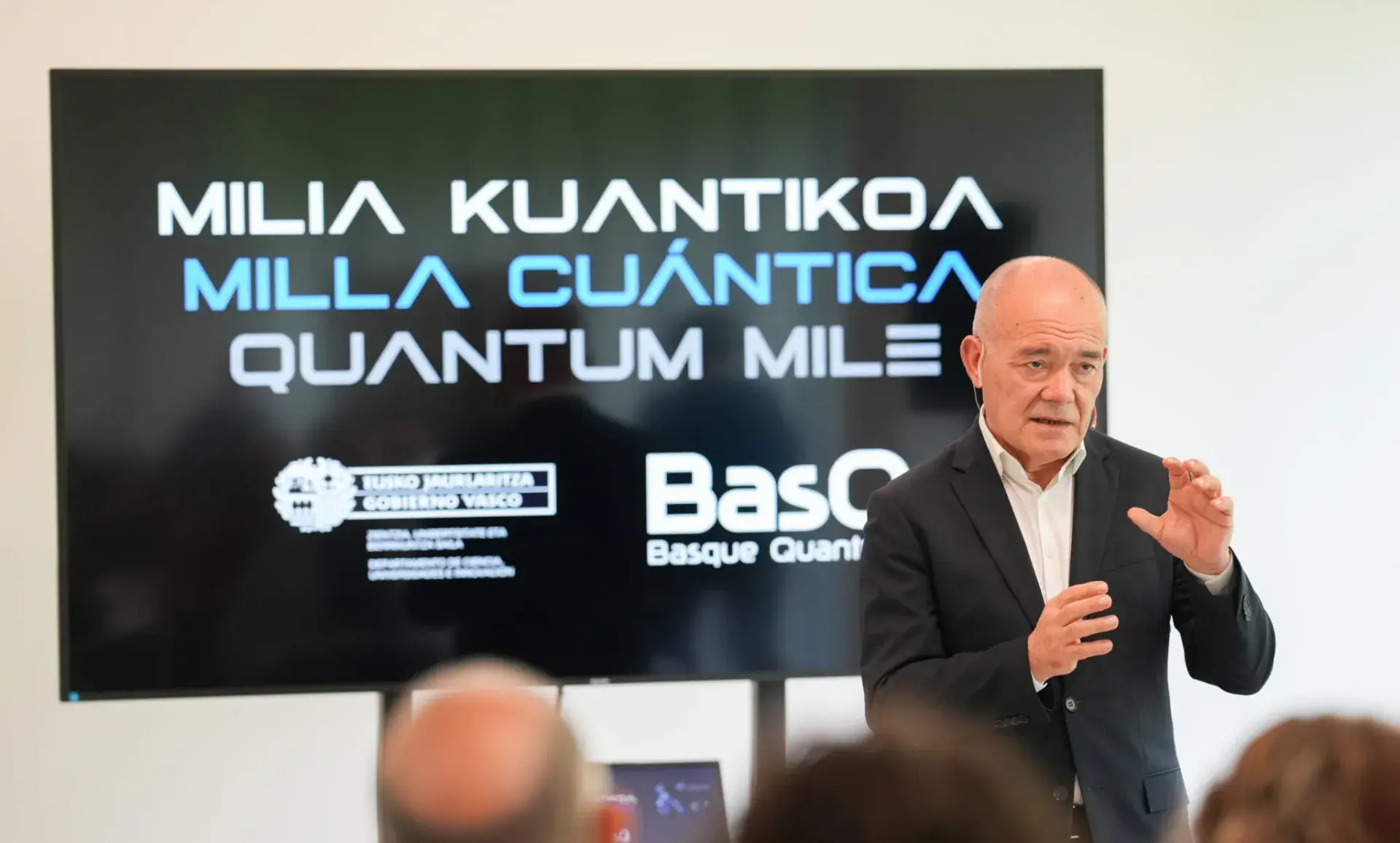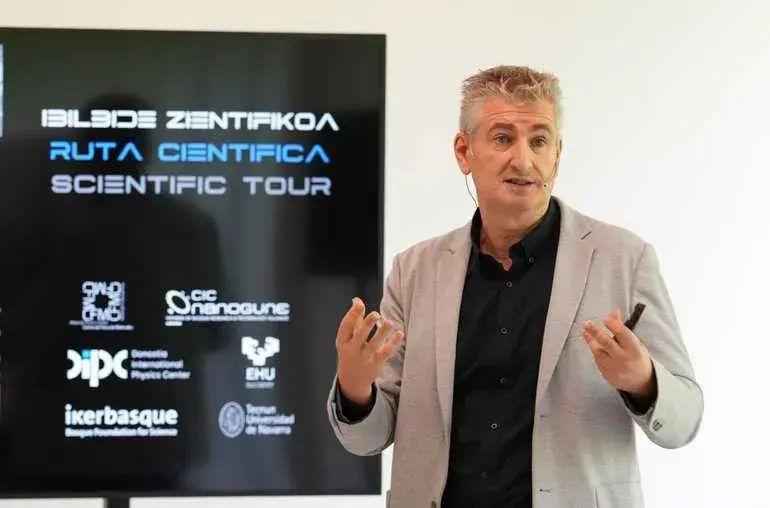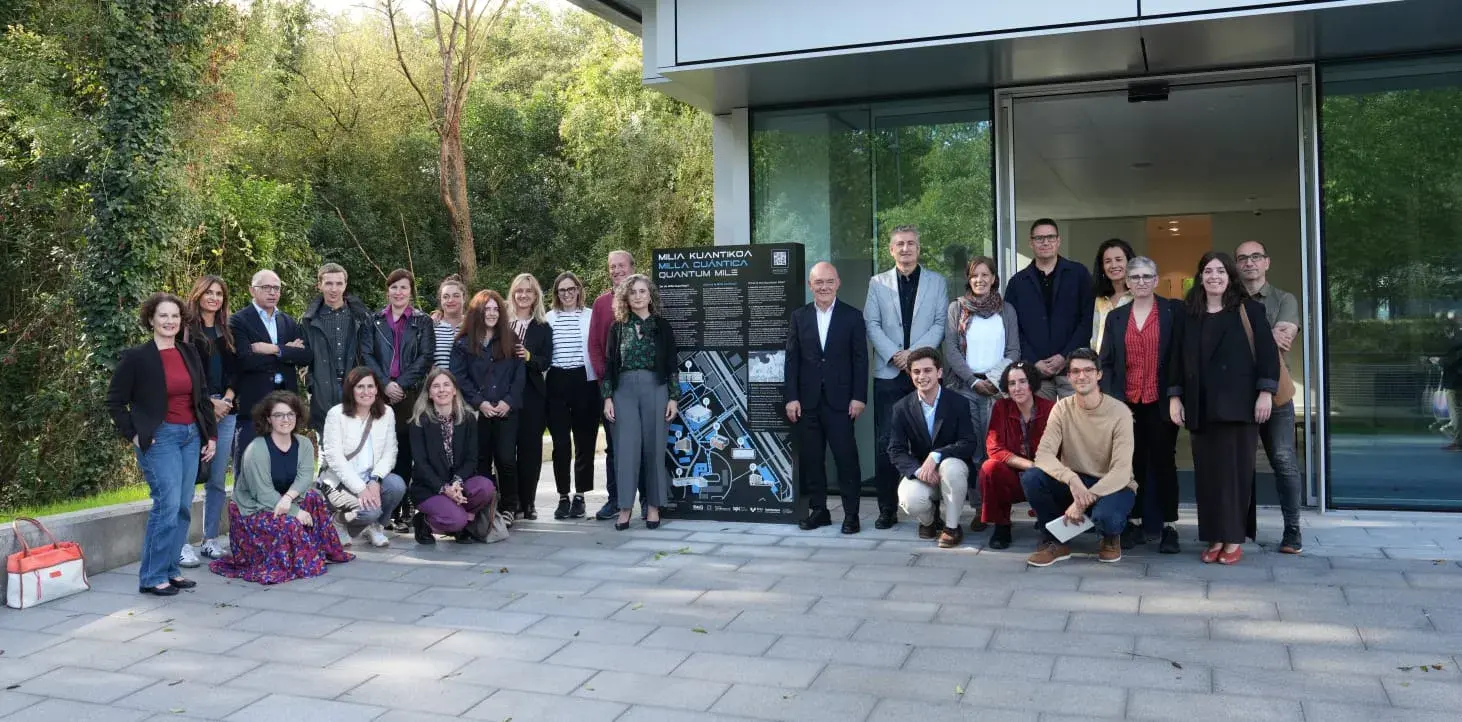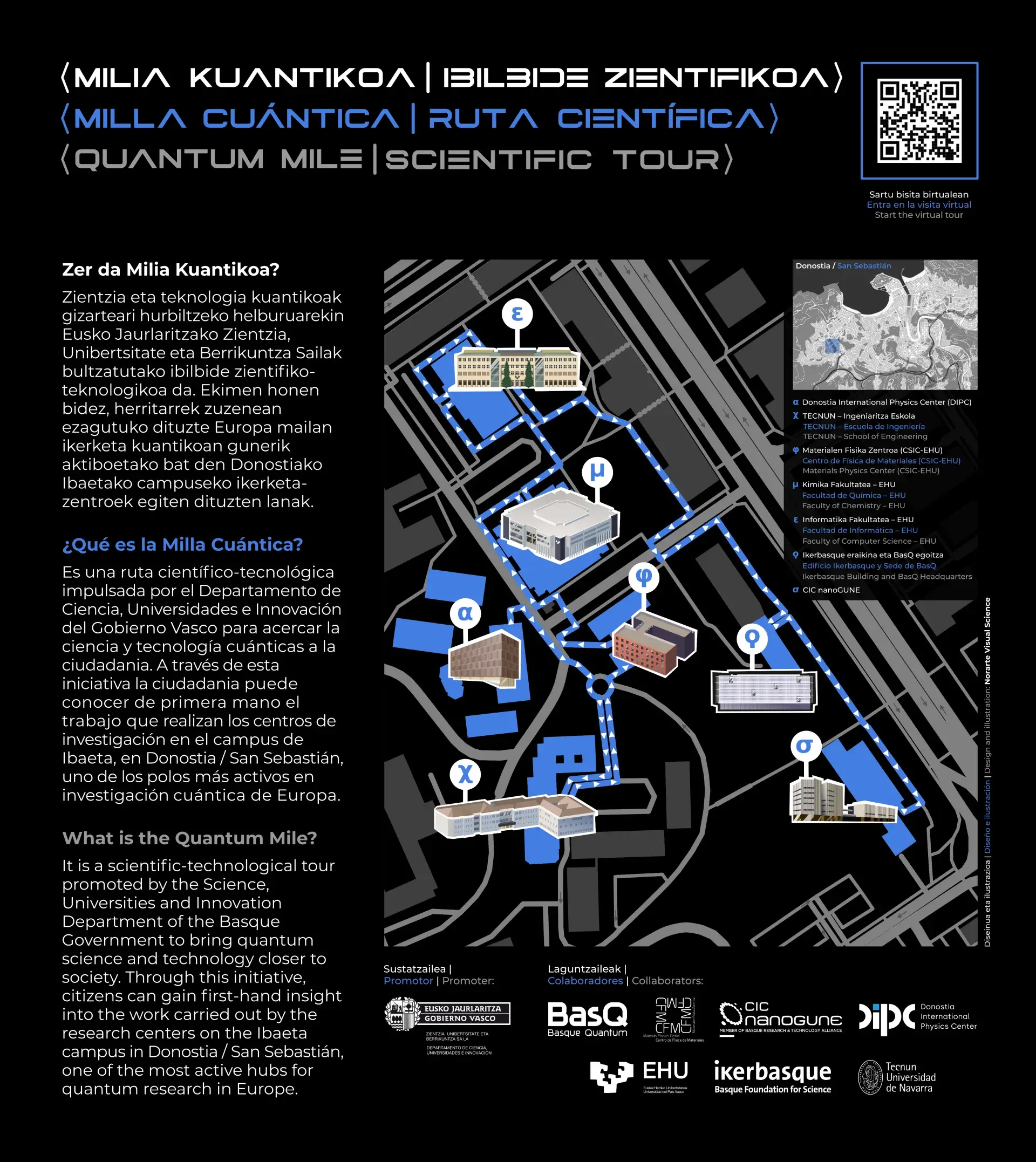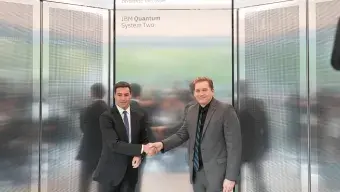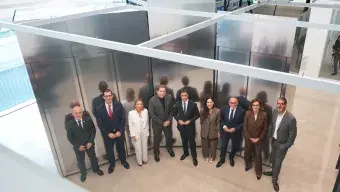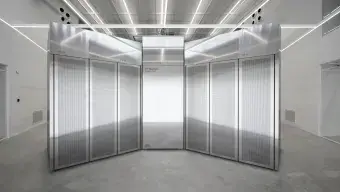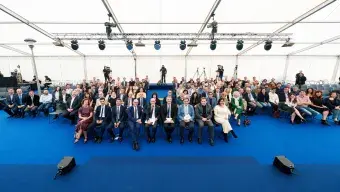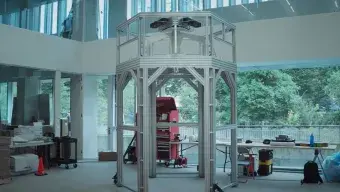Councillor Pérez Iglesias presents the Quantum Mile: a journey through quantum physics research in Donostia
October 14, 2025Ibaeta now has a scientific-technological route that can be explored on foot or virtually. This is an informative initiative that highlights and recognises Basque scientific leadership in quantum science and technologies.
The Department of Science, Universities and Innovation presents the Quantum Mile, a scientific and technological route that allows citizens to learn about the work carried out by the scientific community in the field of quantum physics to generate cutting-edge knowledge and develop technologies that will transform the future, ranging from quantum computing to sensor technologies and numerous other applications.
The official presentation of the Quantum Mile took place this morning in Donostia, in the new Ikerbasque building, which houses the IBM Quantum System Two quantum computer, inaugurated on 14 October. The event was attended by the Minister for Science, Universities and Innovation, Juan Ignacio Pérez Iglesias; the Vice-Chancellor of the Gipuzkoa Campus of the University of the Basque Country, Juana Goizueta; and the Director of Basque Quantum, Javier Aizpurua.
This scientific-technological route is located in Ibaeta, one of Europe's most active centres for quantum research, and offers two complementary ways to explore it:
- Walking route: a signposted walk with seven informative infographics installed at the entrance to the buildings that house the main research centres and faculties involved.
- Interactive virtual tour: a 360-degree digital tour that immerses visitors in the laboratories and research spaces, showing in detail the scientific work, technological equipment and capabilities of each group.
The seven centres that make up the Quantum Mile are: Donostia International Physics Centre (DIPC), Materials Physics Centre (CFM), CIC nanoGUNE, Tecnun (University of Navarra), the EHU's Computer Science and Chemistry Faculties, and the new Ikerbasque building, headquarters of the Basque Quantum alliance.
The infographics, designed by scientific illustrators, are intended for a general audience, combining scientific rigour with accessible and visually appealing language. They are presented in Basque, Spanish and English, and provide information about each centre, its work in quantum physics and key concepts in this discipline.
For its part, the virtual platform uses Smart Map technology to display high-resolution scans of laboratories and recreations of future scientific spaces. This immersive experience, available in three languages, provides an understanding of the work and potential of the various research groups, with explanations in text and audio, and interactive content.
Highlights of the virtual Quantum Mile include the IBM Quantum System Two quantum computer, the Hyperion supercomputer at the DIPC, and laboratories specialising in nanotechnology, microscopy and quantum algorithms, among others.
Access to the virtual tour is possible via QR codes installed on the physical totems along the route or via the Basque Quantum website.
The Quantum Mile is presented as an educational and informative tool, accessible to all audiences, which highlights and recognises the work of Basque scientists in the field of quantum science and technology.
